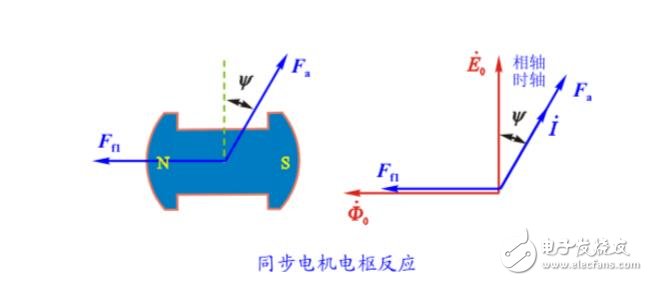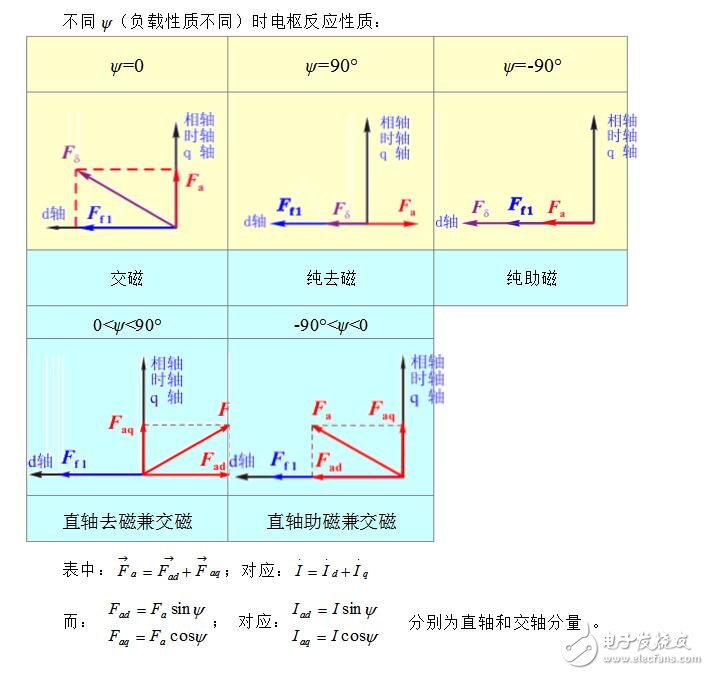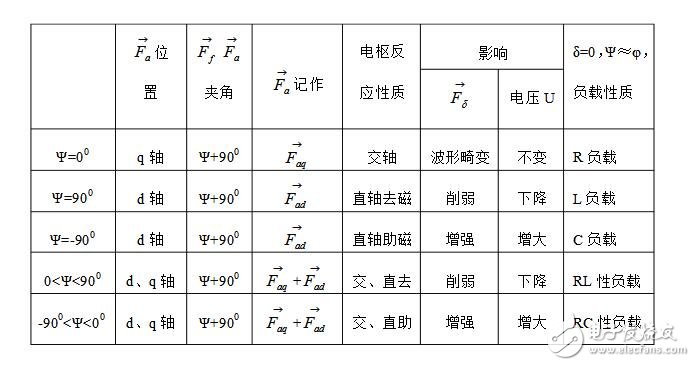
Privacy statement: Your privacy is very important to Us. Our company promises not to disclose your personal information to any external company with out your explicit permission.
![]() May 16, 2019
May 16, 2019
When the synchronous generator outputs a load, the magnetic field generated by the current in the armature winding will act on the main magnetic field, which is the armature reaction of the synchronous generator;
1) When the output of the generator is a capacitive load, the direction of the armature reaction magnetic field is the same as the direction of the main magnetic field, and the main magnetic field will be magnetized;
2) When the inductive load is output from the generator, the direction of the armature reaction magnetic field is opposite to the direction of the main magnetic field, and the main magnetic field will be demagnetized;
3) When the output of the generator is a resistive load, the direction of the armature reaction magnetic field is perpendicular to the direction of the main magnetic field, and the front pole tip of the main magnetic pole is opposite to the direction of the main magnetic field, demagnetizing the main magnetic field; The rear pole tip is in the same direction as the main magnetic field, and will magnetize the main magnetic field; since the motor works in a state where the magnetic circuit is close to saturation, the magnetization is less than the demagnetization effect, and the magnetic field is slightly reduced.

When the synchronous generator is outputting power, a current flows in the armature, and this current generates a magnetic field. The magnetic field generated by the armature current will act on the main magnetic field, which produces an armature reaction. In the case of a current in the stator, there is no armature reaction at no load.


The typical armature response effects are mainly as follows:
1 cross-axis armature reaction, generated when E0 and Ia are in phase (if the influence of armature winding reactance is neglected, the generator is equivalent to a pure resistive load);
2 Straight-axis demagnetization armature reaction occurs when Ia lags E 0 90° (when the generator has pure inductive load);
3 Straight-axis magnetizing armature reaction, which occurs when Ia leads E 0 90° (when the generator has a pure capacitive load).
The physical meaning of synchronous reactanceThe synchronous reactance is the sum of the stator leakage reactance of the synchronous motor and the armature reaction reactance. It shows the effect of the armature reaction magnetic field and the leakage magnetic field on the phase circuits of the synchronous motor in symmetric and stable operation.
Difference between armature reaction reactance and synchronous reactanceArmature reaction reactance: After the synchronous generator plus the load, the circuit is formed, and the stator winding, that is, the armature winding, forms a current. This current also generates a magnetomotive force called the armature magnetomotive force. The pivotal magnetomotive force affects the magnetomotive force, which is called the armature reaction.
The results of the armature reaction are classified into three categories depending on the type of load.
1) If it is a resistive load, the combined magnetomotive force of the armature magnetomotive force and the field magnetomotive force will increase, and the resultant magnetomotive force will become slightly larger;
2) If it is an inductive load, the combined magnetomotive force of the armature magnetomotive force and the field magnetomotive force will become much smaller, and the resultant magnetomotive force will become smaller;
3) If it is a capacitive load, the combined magnetomotive force of the armature magnetomotive force and the field magnetomotive force will increase. The resultant magnetomotive force becomes large.
The armature reaction reactance is to reflect the influence of the magnetomotive force of the armature reaction on the magnetostatic force. The armature reaction reactance is an extrinsic feature of the armature reaction and an extrinsic property.
The synchronous reactance includes the armature reaction reactance and the stator leakage reactance. This is the relationship between the synchronous reactance and the armature reaction reactance, a affiliation.
The above is the Introduction to Armature Reactions of Synchron we have listed for you. You can submit the following form to obtain more industry information we provide for you.
You can visit our website or contact us, and we will provide the latest consultation and solutions
Send Inquiry
Most Popular
lastest New
Send Inquiry

Privacy statement: Your privacy is very important to Us. Our company promises not to disclose your personal information to any external company with out your explicit permission.

Fill in more information so that we can get in touch with you faster
Privacy statement: Your privacy is very important to Us. Our company promises not to disclose your personal information to any external company with out your explicit permission.